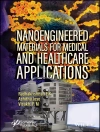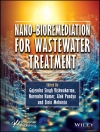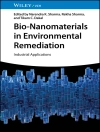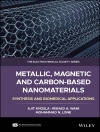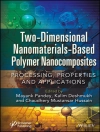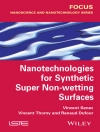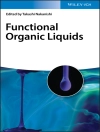This fourth volume of the landmark handbook focuses on the design, testing, and thermal management of 3D-integrated circuits, both from a technological and materials science perspective.
Edited and authored by key contributors from top research institutions and high-tech companies, the first part of the book provides an overview of the latest developments in 3D chip design, including challenges and opportunities. The second part focuses on the test methods used to assess the quality and reliability of the 3D-integrated circuits, while the third and final part deals with thermal management and advanced cooling technologies and their integration.
表中的内容
Introduction to Design, Test and Thermal Management of 3D Integrated Circuits xv
Part I Design 1
1 3D Design Styles 3
Paul D. Franzon
1.1 Introduction 3
1.2 3D-IC Technology Set 3
1.3 Why 3D 6
1.4 Miniaturization 7
1.5 Memory Bandwidth 8
1.6 3D Logic 10
1.7 Heterogeneous Integration 16
1.8 Conclusions 18
References 18
2 Ultrafine Pitch 3D Stacked Integrated Circuits: Technology, Design Enablement, and Application 21
Dragomir Milojevic, Prashant Agrawal, Praveen Raghavan, Geert Van der Plas, Francky Catthoor, Liesbet Van der Perre, Dimitrios Velenis, Ravi Varadarajan, and Eric Beyne
2.1 Introduction 21
2.2 Overview of 3D Integration Technologies 23
2.3 Design Enablement of Ultrafine Pitch 3D Integrated Circuits 25
2.4 Implementation of Mobile Wireless Application 32
2.5 Conclusions 38
References 39
3 Power Delivery Network and Integrity in 3D-IC Chips 41
Makoto Nagata
3.1 Introduction 41
3.2 PDN Structure and Integrity 41
3.3 PDN Simulation and Characterization 43
3.4 PDN in 3D Integration 49
References 52
4 Multiphysics Challenges and Solutions for the Design of Heterogeneous 3D Integrated System 53
Alexander Steinhardt, Dimitrios Papaioannou, Andy Heinig, and Peter Schneider
4.1 Introduction 53
4.2 Data Handling for the System View 61
4.3 Electrical Challenges 62
4.4 Mechanical Challenges 67
4.5 Thermal Challenges 68
4.6 Thermomechanical Challenges 72
Acknowledgments 77
References 77
5 Physical Design Flow for 3D/Co Wo S®Stacked ICs 81
Yu-Shiang Lin, Sandeep K. Goel, Jonathan Yuan, Tom Chen, and Frank Lee
5.1 Introduction 81
5.2 Co Wo S®vs. 3D Design Paradigm 82
5.3 Physical Design Challenges 83
5.4 Physical Design Flow 85
5.5 Physical Design Guideline 94
5.6 TSMC Reference Flows 113
5.7 Conclusion 114
References 114
6 Design and CAD Solutions for Cooling and Power Delivery for Monolithic 3D-ICs 115
Sandeep Samal and Sung K. Lim
6.1 Introduction 115
6.2 New Thermal Issues in Monolithic 3D-ICs 117
6.3 Fast Thermal Analysis with Adaptive Regression 121
6.4 New Power Delivery Issues in Monolithic 3D-ICs 126
6.5 Power Delivery Network Optimization 134
6.5.1 Design Styles 134
6.6 Conclusions 139
References 139
7 Electronic Design Automation for 3D 141
Paul D. Franzon
7.1 Introduction 141
7.2 EDA Flows for 3D-IC 141
7.3 Commercial EDA Support 143
7.4 Modular Partitioning Approaches 143
7.5 Circuit Partitioning 145
7.6 Conclusions 146
References 147
8 3D Stacked DRAM Memories 149
Christian Weis, Matthias Jung, and Norbert Wehn
8.1 3D-DRAM Design Space and DRAM Technology Background 150
8.2 Design Space Exploration of 3D-DRAMs 160
8.3 Architectural 3D Stacked DRAM Controller Optimizations 176
8.4 Conclusion 183
References 184
Part II Test 187
9 Cost Modeling for 2.5D and 3D Stacked ICs 189
Mottaqiallah Taouil, Said Hamdioui, and Erik Jan Marinissen
9.1 Introduction 189
9.2 Testing 3D Stacked ICs 189
9.3 Cost Modeling 191
9.4 3D-COSTAR 193
9.5 Case Studies 196
9.6 Conclusion 207
References 207
10 Interconnect Testing for 2.5D- and 3D-SICs 209
Shi-Yu Huang
10.1 Introduction 209
10.2 Pre-Bond TSV Testing 211
10.3 Post-Bond Interconnect Testing 220
10.4 Concluding Remarks 227
References 228
11 Pre-Bond Testing Through Direct Probing of Large-Array Fine-Pitch Micro-Bumps 231
Erik Jan Marinissen, Bart De Wachter, Jörg Kiesewetter, and Ken Smith
11.1 Introduction 231
11.2 Pre-Bond Testing 232
11.3 Micro-Bumps 234
11.4 Probe Technology 236
11.5 Test Vehicle: Vesuvius-2.5D 239
11.6 Experiment Results 242
11.7 Conclusion 249
Acknowledgments 249
References 250
12 3D Design-for-Test Architecture 253
Erik Jan Marinissen, Mario Konijnenburg, Jouke Verbree, Chun-Chuan Chi, Sergej Deutsch, Christos Papameletis, Tobias Burgherr, Konstantin Shibin, Brion Keller, Vivek Chickermane, and Sandeep K. Goel
12.1 Introduction 253
12.2 Basic 3D-Df T Architecture 254
12.3 Vesuvius-3D 3D-Df T Demonstrator 257
12.4 Extensions to the Basic 3D-Df T Architecture 265
12.5 Conclusion 276
Acknowledgments 276
References 277
13 Optimization of Test-Access Architectures and Test Scheduling for 3D ICs 281
Sergej Deutsch, Brandon Noia, Krishnendu Chakrabarty, and Erik Jan Marinissen
13.1 Uncertain Parameters in Optimization of 3D Test Architecture and Test Scheduling 282
13.2 Robust Optimization of 3D Test Architecture 285
13.3 Simulation Results 294
13.4 Conclusion 299
References 299
14 IEEE Std P1838: 3D Test Access Standard Under Development 301
Adam Cron, Erik Jan Marinissen, Sandeep K. Goel, Teresa Mc Laurin, and Sandeep Bhatia
14.1 Introduction 301
14.2 Overview 303
14.3 Scope and Terminology 304
14.4 Serial Control 306
14.5 Die Wrapper Register 311
14.6 Flexible Parallel Port 317
14.7 Conclusion 322
References 322
15 Test and Debug Strategy for TSMC Co Wo S®Stacking Process-Based Heterogeneous 3D-IC: A Silicon Study 325
Sandeep K. Goel, Saman Adham, Min-Jer Wang, Frank Lee, Vivek Chickermane, Brion Keller, Thomas Valind, and Erik Jan Marinissen
15.1 Introduction 325
15.2 Overview of Co Wo S®Stacking Process 327
15.3 Co Wo S®Chip Architecture 327
15.4 Test and Diagnosis Architecture 329
15.5 Testing of Passive Silicon Interposer 336
15.6 Experimental and Silicon Results 340
15.7 Conclusion 345
References 345
Part III Thermal Management 347
16 Thermal Isolation and Cooling Technologies for Heterogeneous 3D- and 2.5D-ICs 349
Yang Zhang, Hanju Oh, Yue Zhang, Li Zheng, Gary S.May, and Muhannad S. Bakir
16.1 Thermal Challenges for Heterogeneous 3D-ICs 349
16.2 Thermal Challenges and Solutions for 2.5D-ICs 359
16.3 Electrical and Fluidic Micro-Bumps 363
16.4 High Aspect Ratio TSVs Embedded in A Micro pin Fin Heat Sink 367
16.5 Conclusion 371
References 371
17 Passive and Active Thermal Technologies: Modeling and Evaluation 375
Craig E. Green, Vivek Sahu, Yuanchen Hu, Yogendra K. Joshi, and Andrei G. Fedorov
17.1 Introduction 375
17.2 Integrated Background Heat Sink Approaches 376
17.3 Solid-State Cooling 384
17.4 Passive Cooling: Phase Change Material Regeneration Concerns 393
References 409
18 Thermal Modeling and Model Validation for 3D Stacked ICs 413
Herman Oprins, Federica Maggioni, Vladimir Cherman, Geert Van der Plas, and Eric Beyne
18.1 Introduction 413
18.2 Modeling Methods for the Thermal Analysis of 3D Integrated Structures 413
18.3 3D Stacked Thermal Test Vehicles 421
18.4 Experimental Validation of Thermal Models for 3D-ICs 425
18.5 Inter-die Thermal Resistance 428
References 430
19 On the Thermal Management of 3D-ICs: From Backside to Volumetric Heat Removal 433
Thomas Brunschwiler, Gerd Schlottig, Chin L. Ong, Brian Burg, and Arvind Sridhar
19.1 Introduction: Density Scaling Drives Compute Performance and Efficiency 433
19.2 Thermal Management Landscape for 3D-ICs 434
19.3 Advances on Thermal Interfaces: Percolating Thermal Under fills 437
19.4 Single-Phase Interlayer Cooling: Design Rules toward Extreme 3D 438
19.5 Applicability of Two-Phase Cooling for 3D-ICs 443
19.6 Compact Thermal Modeling Framework 448
19.7 Consequence of Fluid Presence for the Package Topology 449
19.8 Thermal Laminates Enabling Dual-Side Cooling and Electrical Interconnects 453
Interconnects 455
References 456
Index 461
关于作者
Paul D. Franzon is currently the Cirrus Logic Distinguished Professor of Electrical and Computer Engineering and Director of Graduate programs in ECE at North Carolina State University. He earned his Ph D from the University of Adelaide, Adelaide, Australia. He has also worked at AT&T Bell Laboratories, DSTO Australia, Australia Telecom and four companies he cofounded, Communica, Light Spin Technologies, Polymer Braille Inc. and Avago. His current interests include applying machine learning to EDA, building machine learning accelerators, neuromorphic computing, RFID, advanced packaging, 3DICs and secure chip design. He has lead several major efforts and published over 300 papers in these areas. In 1993 he received an NSF Young Investigators Award, in 2001 was selected to join the NCSU Academy of Outstanding Teachers, in 2003, selected as a Distinguished Alumni Professor, received the Alcoa Research Award in 2005, and the Board of Governors Teaching Award in 2014. He served with the Australian Army Reserve for 13 years as an Infantry Soldier and Officer. He is a Fellow of the IEEE.
Erik Jan Marinissen is Principal Scientist at IMEC in Leuven, Belgium and part-time Visiting Researcher at Eindhoven University of Technology in the Netherlands. Prior to IMEC, he worked at NXP Semiconductors and Philips Research in Eindhoven, Nijmegen, and Sunnyvale (CA). His research on IC test and design-for-test covers topics as diverse as modular test of So Cs, 3D-stacked ICs, CMOS below 10nm, silicon photonics, and STT-MRAMs. Marinissen received the MSc degree in computing science and the PDEng degree in software technology from Eindhoven University of Technology. An IEEE Fellow, he is a co-author of more than 275 journal and conference papers and a co-inventor of 18 granted patent families. He served as editor-in-chief of IEEE Std 1500 and as founder/chair of the IEEE Std P1838 Working Group on 3D-SIC test access. In 2019-2021, he serves on the Board of Governors of IEEE Computer Society.
Muhannad S. Bakir is a Professor in the School of Electrical and Computer Engineering at the Georgia Institute of Technology. He is a recipient of the 2018 IEEE Electronics Packaging Society (EPS) Exceptional Technical Achievement Award ‘for contributions to 2.5D and 3D IC heterogeneous integration, with focus on interconnect technologies.’ He is also a recipient of the 2018 Mc Knight Foundation Technological Innovations in Neuroscience Award, 2013 Intel Early Career Faculty Honor Award, 2012 DARPA Young Faculty Award, and 2011 IEEE EPS Outstanding Young Engineer Award. He has published more than 200 journal and conference papers in the areas of 2.5D and 3D IC heterogeneous integration, power delivery, embedded cooling, photonic interconnects, and flexible interconnects. Dr. Bakir serves on the editorial board of IEEE Transactions on Components, Packaging and Manufacturing Technology (TCPMT) and IEEE Transactions on Electron Devices (TED). He is a Distinguished Lecturer for IEEE EPS.
Philip Garrou is a consultant and expert witness in the field of IC packaging materials and applications, prior to which he was Director of Technology and Business Development for Dow Chemicals’ Electronic Materials business. He is author of the weekly blog ‘Insights from the Leading Edge’ (IFTLE) at www.3Dincites.com.
Mitsumasa Koyanagi is Professor in the Graduate School of Engineering at Tohoku University, Japan. After his Ph D he joined the Central Research Laboratory of Hitachi where he was engaged in the research on semiconductor memories. Afterwards he worked at the Xerox Palo Alto Research Center in California, USA, before he became Professor in the Research Center for Integrated Systems at Hiroshima University, Japan.
Peter Ramm is Head of Strategic Projects at Fraunhofer EMFT in Munich, Germany. He received Physics and Dr. rer. nat. degrees from the University of Regensburg and subsequently worked for Siemens in their DRAM facility in Regensburg, where he was responsible for the overall process integration with focus on backend-of-line. In 1988 he joined Fraunhofer IFT (now EMFT), working mainly on integration technologies for innovative devices and heterogeneous systems including the development of 3D TSV processes. Peter Ramm is co-author of over 100 publications and 36 issued patents (US, EU, Japan). He is IEEE Senior Member, IMAPS Fellow and Life Member, and received the Technical Achievement Award ‘For Pioneering Work on 3D IC Stacking and Integration’ from IMAPS. Peter Ramm is co-editor of Wiley-VCH’s Handbook of Wafer Bonding and Encyclopedia on Materials, Science and Technology.


